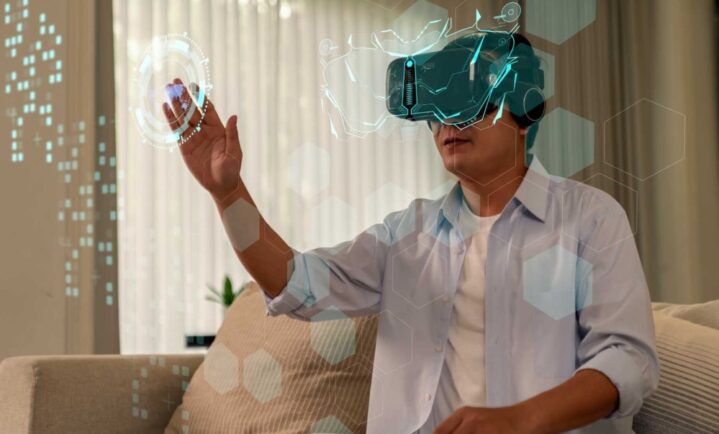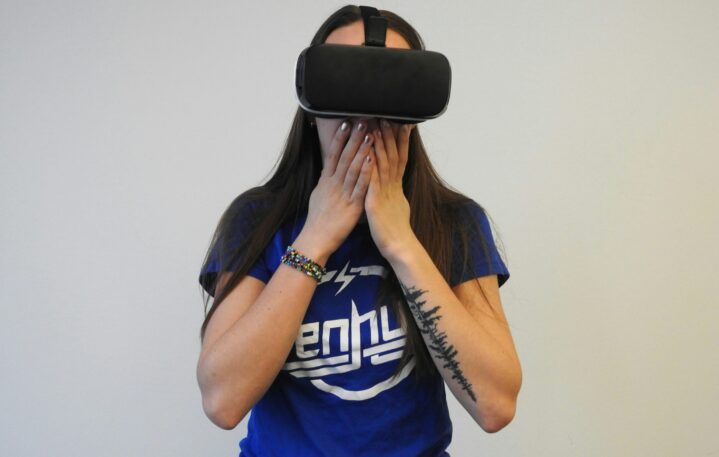Imagine the most intense sports rivalry you can think of. What if it didn’t take place in a stadium, but in your living room, on a headset, and thousands of kilometers away? Instead of fans, you would hear avatars cheering from a screen, and trophies would be earned through sweat in a virtual gym. That’s not science fiction—it’s already happening. Wanna learn how? Read this article.
Leagues Go Digital
No longer is this just solo gameplay. Whole leagues have sprung up in VR, bringing with them organization, timetables, and even fierce rivalries from all over the world. Echo VR, Gym Class VR, and Walkabout Mini Golf now feature regular seasons, playoffs, and even rings. Teams form on Discord, strategies are honed in training lobbies, and fans are showing up for their weekly matches. Now, virtual athletes are hunting after titles that are watched by thousands.
Against the backdrop of such growth in interest, it is not surprising that online betting is also attracting more and more attention, organically intertwining with the culture of virtual sports. After all, viewers do not just want to watch—they want to become part of what is happening, to feel the excitement along with the participants. Bets turn each game into an even more exciting spectacle, where every ball, every goal, and every virtual pass are important.
Champions in Headsets

Virtual leagues aren’t just “for fun”—they’re creating real stars, real stats, and real drama. Let’s look at what makes these competitions stand out:
- Ranked divisions with promotion systems ─ In the VR Master League, players work their way through tiers based on performance, echoing traditional sports ladders.
- Live broadcasts with commentators ─ Tournaments like VREL Echo Arena Finals are streamed on Twitch with play-by-play analysis, instant replays, and highlight reels.
- Real-world sponsorships ─ Top VR athletes have received gaming gear, custom jerseys, and monetary prizes from headset brands and tech companies.
- Global representation ─ Teams from Germany, Brazil, South Korea, and the U.S. compete side by side in international leagues, with no travel costs or visas needed.
This ecosystem is no longer a niche—it’s a competitive battlefield filled with pressure, pride, and endless passion.
Built for Competition

The reason why VR leagues have such great appeal goes beyond innovation – it’s the competition that really matters. Users in Echo VR prepare like they are real athletes. Some digital coaches even implement advanced techniques of performance analytics, measuring their gaming metrics over time. These training regimens are not casual; they include warm-up routines, cooldown phases, and even nutrition advice shared within the teams’ Discord servers.
Mental conditioning, stress management, and role-specific drills also come into play, echoing professional sports preparation. Teams schedule scrimmages, maintain playbooks, and assign roles like team captains or analysts. Some even review footage with former athletes or sports psychologists, striving for peak mental focus and cohesion under pressure. For instance, some of them spend hours practicing throws, dodging, and movement pathways.
At the same time, the VRCL (Virtual Reality Combat League) and similar leagues need formal registration. They have set schedules for matches and also include some form of refereeing. Players in Gym Class VR undergo scouting and tryouts that include footage breakdowns for evaluation. They are not merely entering a lobby – they strive to become part of a system where everything is engineered for unparalleled achievement. It is collective, individual and it’s gaming like you have never seen before.
Training in the Metaverse

To keep up, players are training smarter than ever, using tools made specifically for virtual sports. Let’s break down what’s helping athletes go from casual to elite:
- Precision tracking software ─ Rezzil Player 22 breaks down shot accuracy, movement range, and reaction times to millisecond detail.
- AI sparring bots ─ Thrill of the Fight and Ironlights offer smart opponents who adapt to your style, making every training session unpredictable and sharp.
- Social workout lobbies ─ Players meet in FitXR or Liteboxer VR to cross-train, stay agile, and keep fit for tournament day.
- Strategy boards and clip reviews ─ Using SideQuest screen capture tools, players upload and review past matches with their team, just like in pro locker rooms.
Preparation is no longer optional. In this world, the metaverse isn’t a fantasy—it’s the gym, the war room, and the proving ground all at once.
Crowds, Cameras, Action

Fans of VR sports no longer bear the mark of being a spectator. They are thrust into the action. They can access virtual stadiums in Horizon Worlds and VRChat, where they can cheer along with other live avatars while flying above the course. The best part? People create fan signs, chant slogans, and dance when their group hits.
Accessing digital content has seen a further increase. Players and event organizers use LIV and MixCast to customize 3D streaming angles and highlights in the same fashion as ESPN. VR leagues have full-fledged dedicated highlight editors, post-game interviewers, and even a weekly power ranking segment. Communities gather in voice chat lobbies solely to analyze the gameplay, debate MVP picks, and engage in daily discussions dedicated to the topic. It’s beyond competition. It’s a full-blown culture.
Next-Level Rivalries
Gaming has transformed into a whole new world of sweat, strategy, and sacrifice—all inside a headset. Without ever setting foot on a real court, players are carving out occupations, nurturing rivalries, and attracting admirers from around the world. These leagues are still in their infancy. So grab your imaginary sneakers, because the next title can be yours.
